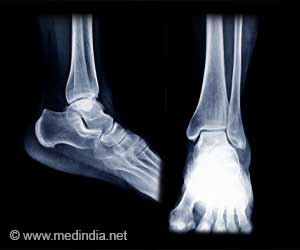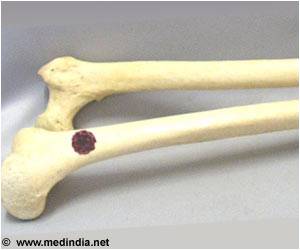A new study shows that in postmenopausal women with low bone mass, romosozumab significantly increased bone mineral density and bone content in both the spine and hip compared to baseline, and also compared with the commonly prescribed anabolic agent teriparatide and placebo.

"These impressive results support the continued clinical investigation of romosozumab as a potential treatment for postmenopausal women with osteoporosis with established bone mineral density deficit who are at increased risk of fracture," said lead investigator Professor Harry K. Genant of the University of California San Francisco, and a Co-founder of Synarc, Inc. the world's largest imaging core lab dedicated to clinical trials.
"A large phase III clinical trial program is underway, evaluating romosozumab against both placebo and an active comparator in more than 10,000 women with postmenopausal osteoporosis to evaluate its potential to prevent osteoporotic fractures, and to confirm its safety for long-term use," Professor Genant added.
In the lumbar spine, treatment with romosozumab and teriparatide achieved similar and significant gains from baseline in trabecular bone mineral density +18.3% vs. +20.1% respectively p<0.05).
However, at the hip, trabecular bone mineral density gains were significantly larger with romosozumab than teriparatide (10.8% vs 4.2%, P=0.01).Cortical bone mineral density gains were larger with romosozumab compared with teriparatide at both the lumbar spine (13.7% vs. 5.7%, P<0.0001) and hip (1.1% vs. 0.9%, P=0.12). Cortical bone mineral content gains were also larger with romosozumab compared with teriparatide at both the lumbar spine (23.3% vs. 10.9%, P<0.0001) and hip (3.4% vs. 0.0%, P=0.03).
Sclerostin is an osteocyte-derived inhibitor of osteoblast activity. Romosozumab, a monoclonal antibody which binds to sclerostin, stimulates bone formation and decreases bone resorption.
Advertisement
"The use of teriparatide, an effective anabolic agent which can stimulate bone growth and reduce the risk of fractures, is potentially problematic due to the requirement for daily subcutaneous injection, its relatively high cost, and also a black-box warning about the risk of inducing osteosarcoma in rats," Professor Genant concluded.
Advertisement
The most common fractures associated with post-menopausal osteoporosis occur at the hip, spine and wrist.3 Of particular concern are vertebral (spinal) and hip fractures. Vertebral fractures can result in intense back pain and deformity. A hip fracture usually requires surgery and may result in loss of independence, or even death in an elderly frail patient.
This international, randomised, placebo-controlled, phase 2 study enrolled postmenopausal women 55-85 years old with lumbar spine, total hip, or femoral neck T-score‡ ≤0.0 and ≥0.5 at all sites. Quantitative computed tomography (QCT) measurements were performed at the "total" lumbar spine (mean of L1 and L2 entire vertebral bodies) and total hip in subjects receiving placebo, subcutaneous teriparatide (20 μg once-daily), and subcutaneous romosozumab (210 mg monthly).‡ the number of standard deviations above or below the mean for a healthy 30 year old female of the same sex and ethnicity as the patient. The percentage change from baseline in cortical bone mineral density and bone mineral content, and trabecular bone mineral density was evaluated at 12 months. The analyses included subjects with baseline and ≥1 post-baseline QCT measurements.
Source-Eurekalert















